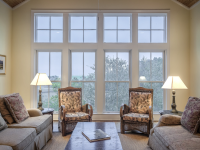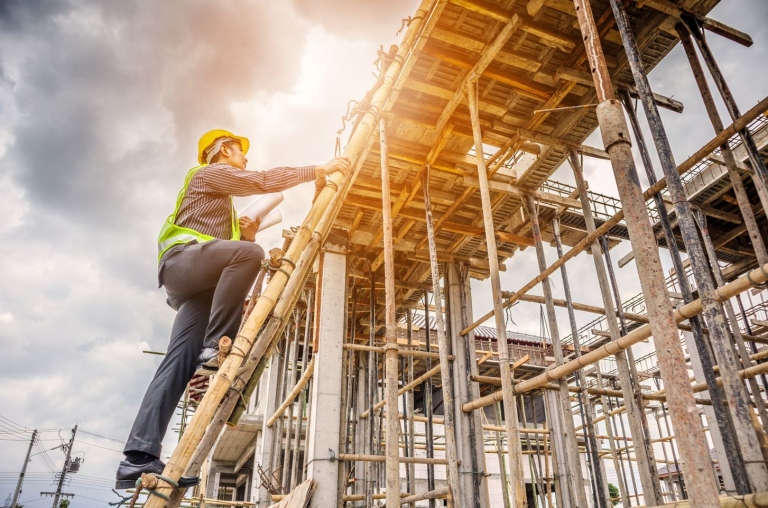In recent years, there has been an increased focus on sustainability in the construction industry. Sustainable design is a construction approach that considers a project’s environmental impact throughout its life cycle. This includes everything from the materials used in construction to the methods used to build the project. Sustainable design seeks to reduce the negative environmental impact of construction projects by using innovative materials and techniques that are more environmentally friendly. This blog post will look at some of the sustainable design innovations used in construction projects today.
The construction industry is responsible for a large amount of environmental pollution.
The construction industry is one of the significant contributors to global environmental pollution and degradation. As climate concerns continue to increase, construction companies are looking for ways to reduce their impact and become more sustainable.
Innovations in materials and methods, such as utilizing renewable energy sources and reusing building components rather than creating new ones from scratch, are helping the construction industry make strides toward being more eco-friendly. Going green is no longer an afterthought for builders—it’s a necessity for protecting our planet. Sustainable construction design can help us all do our part in preserving the environment for future generations.
Many sustainable design practices can reduce the impact of construction on the environment.
Construction can often result in a negative impact on the environment, but recent improvements and innovations in sustainable design solutions have enabled significant progress to be made. Such solutions involve choices and methods beyond traditional construction techniques—from using recycled materials to implementing energy-efficient designs; the aim is to reduce environmental impact while optimizing cost savings actively. Further advances are being made to develop more comprehensive solutions, spanning design, implementation, and performance—covering everything from project planning to operation. With an effective balance between construction costs and environmental benefits now achievable, sustainable design practices are quickly becoming increasingly popular for creating structures with less carbon footprint.
These practices include using recycled materials, renewable energy, and green building techniques.
Sustainable design in construction involves finding ways to reduce environmental impact without compromising the quality of projects. This is often achieved through innovative new methods, materials, and energy sources. Many of these have become increasingly popular, from using recycled materials to tapping into renewable energy sources like solar or water power. Furthermore, green building techniques such as double-paned windows, ventilating systems, and roofs insulated with sustainable materials can be integrated into a project’s design to help make it more environmentally friendly. Taken together, these practices show how much value there is in considering the environment when constructing new buildings.
We can make a significant difference in the pollution caused by construction projects.
Implementing sustainable design practices in the construction industry has never been more critical than now. Every step we take towards reducing our environmental impact, from recycled materials to green building technologies, is crucial. Through improved materials, smarter regulations, and increased collaboration between designers and contractors, we can create incredibly efficient construction projects that are good for the planet and significant investments. By using advanced building techniques, we can lessen water and air pollution caused by construction projects, resulting in a healthier environment for all of us. By making these changes now, we can significantly reduce our environmental footprint in the future and leave behind a legacy of responsible construction practices.
These sustainable practices can also help to save money in the long run by reducing energy costs and waste disposal fees.
Using sustainable practices in construction, like modern design principles, renewable energy sources, and natural materials, isn’t just an excellent way to reduce our environmental impact; it can also save you money before construction even begins. Utilizing strategies like minimizing air infiltration and maximizing solar exposure during the design phase can significantly reduce energy costs over the lifetime of a building. Additionally, responsible waste management can help lower or even avoid hazardous materials disposal fees, providing additional savings to companies and customers. With all these benefits, it’s no surprise sustainable design is on the rise: why not save time and money while protecting the environment?
Sustainable design is an essential part of protecting our environment, and it is something that all construction companies should consider when planning their projects.
As the world becomes increasingly aware of its environmental impact, the importance of sustainable design in construction is becoming increasingly apparent. Designing structures with an eye to their ecological footprint – from the materials used in construction to methods of assembly – is essential for all construction companies to build increasingly better, stronger, and greener buildings. New techniques are constantly being developed, which allow for improved sustainability in construction, from creating more durable materials that can better withstand extreme weather conditions to using renewable resources such as bamboo as a building material to reduce our reliance on non-renewable substances like steel. Sustainable design is a fantastic way to ensure that we are playing our part in preserving our environment over the long term by reducing waste before it even becomes an issue.
The effects of construction on the environment are undeniable. But the good news is that we can all make a difference by implementing sustainable design practices. Using recycled materials, renewable energy solutions, and green building techniques can reduce the pollution generated by construction projects. Not only will this help our planet long-term, but it can also result in cost savings through improved efficiency and reduced waste disposal fees. Sustainable design is not only an environmental issue but also a financial one. We should all be committed to making our construction industry more responsible, efficient and eco-friendly. The future of our planet depends on it!


















